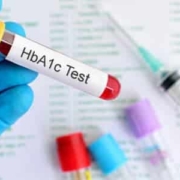Can Weight Loss with Semaglutide Reverse Diabetes?
Type 2 Diabetes is a complex condition that affects millions of individuals worldwide, and it often goes hand in hand with obesity. At Dr. Ruthie Harper’s practice in Austin, TX we understand that the battle against Type 2 Diabetes can be challenging. But the good news is that it’s a battle that can be won!
In this article, Dr. Harper explains the science behind Type 2 Diabetes, including the role of weight and obesity, and explores how innovative medications like Ozempic, Wegovy, and Semaglutide can play a pivotal role in achieving both weight loss and diabetes reversal.
What is Type 2 Diabetes?
Type 2 Diabetes is a metabolic disorder characterized by elevated levels of blood sugar (glucose). This condition occurs when the body becomes resistant to the effects of insulin, a hormone produced by the pancreas that regulates glucose uptake by cells.
As a result, blood sugar remains high, leading to various health complications if left unmanaged. If left uncontrolled, Type 2 Diabetes can have widespread and severe consequences on various organs and systems within the body.
Type 2 Diabetes primarily causes organ damage and health problems through chronic high blood sugar levels (hyperglycemia). Prolonged hyperglycemia harms blood vessels and nerves throughout the body, impairing their function and integrity. This damage disrupts the normal flow of oxygen and nutrients to organs and tissues, leading to the complications listed above.
Note: It’s important to distinguish between Type 2 Diabetes and Type 1 Diabetes. Type 1 Diabetes is an autoimmune disease where the body’s immune system mistakenly attacks and destroys insulin-producing cells in the pancreas. Type 1 typically occurs in childhood. Type 2 Diabetes, on the other hand, typically develops later in life and is closely linked to lifestyle factors, including weight and diet.
Complications of Type 2 Diabetes
People with Type 2 Diabetes are at an increased risk of heart disease, including coronary artery disease, heart attacks, and congestive heart failure. High blood sugar levels contribute to the development of atherosclerosis (hardening of the arteries), narrowing blood vessels and increasing the risk of cardiovascular events.
Persistent high blood sugar levels can also damage the kidneys over time, leading to a condition called diabetic nephropathy. This condition affects the kidneys’ ability to filter waste and excess fluids from the blood, potentially progressing to kidney failure.
Uncontrolled Type 2 Diabetes can cause damage to the blood vessels in the retina, leading to diabetic retinopathy. This condition is a leading cause of vision loss and blindness in adults. Elevated blood sugar levels weaken the immune system’s ability to fight infections, making individuals with Type 2 Diabetes more vulnerable to illnesses like urinary tract infections and skin infections.
Additionally, elevated blood sugar levels can injure nerves throughout the body, often affecting the extremities. Peripheral neuropathy can result in symptoms such as numbness, tingling, and pain, particularly in the hands and feet. Nerve damage (neuropathy) and poor circulation can increase the risk of foot injuries and infections in individuals with Type 2 Diabetes. Left untreated, these ulcers can lead to amputations.
High blood sugar levels can impair the body’s immune response, making individuals more susceptible to skin infections and slow wound healing. And people with Type 2 Diabetes are more prone to gum disease (periodontal disease), which can lead to tooth loss if not properly managed.
Some studies also suggest a link between Type 2 Diabetes and sensorineural hearing loss, particularly in older adults. Men with Type 2 Diabetes may experience erectile dysfunction (impotence) due to damage to blood vessels and nerves. While women with uncontrolled Type 2 Diabetes may face fertility challenges, including irregular menstrual cycles.
What Causes Type 2 Diabetes?
Type 2 Diabetes is a multifactorial and complex metabolic disorder with a range of contributing factors. While genetics play a role, lifestyle factors and obesity are the predominant culprits in the development of Type 2 Diabetes.
Genetics can influence an individual’s susceptibility to Type 2 Diabetes. Specific genes, such as TCF7L2, are associated with a higher risk of Type 2 Diabetes, but genetics alone are not usually the sole cause.
Consuming a diet high in refined sugars, saturated fats, and processed foods is a significant contributor to Type 2 Diabetes. Such dietary choices can lead to weight gain and insulin resistance. A lack of physical activity or a sedentary lifestyle can also increase the risk of Type 2 Diabetes. Regular exercise helps control weight and improves insulin sensitivity.
However, obesity is one of the biggest risk factors for Type 2 Diabetes. Excess body fat, particularly abdominal fat, leads to insulin resistance and an increased demand for insulin. Insulin resistance occurs when the body’s cells become less responsive to the effects of insulin. To compensate, the pancreas produces more insulin, leading to elevated blood sugar levels. This resistance is often associated with obesity, particularly in the abdominal area.
The Role of Weight & Obesity in Type 2 Diabetes
Obesity is a significant risk factor for Type 2 Diabetes. Excess body fat, especially around the abdomen, can lead to insulin resistance. As fat cells release more fatty acids into the bloodstream, they interfere with insulin’s ability to regulate blood sugar levels effectively. he Pervasive Influence of Weight and Obesity on Type 2 Diabetes
Weight and obesity are critical factors in the development and progression of Type 2 Diabetes. At the heart of the connection between obesity and Type 2 Diabetes lies insulin resistance. This phenomenon occurs when the body’s cells become less responsive to insulin, the hormone responsible for regulating blood sugar levels. In individuals with excess body weight, particularly abdominal obesity, fat cells release increased amounts of fatty acids into the bloodstream. These fatty acids interfere with insulin’s ability to facilitate glucose uptake by cells, resulting in elevated blood sugar levels.
Obesity is also characterized by an accumulation of adipose tissue, or fat cells. Adipose tissue is not merely a passive storage depot for excess energy; it’s a dynamic organ that secretes various molecules, including inflammatory cytokines. Inflammation plays a significant role in the development of insulin resistance. As adipose tissue expands in obesity, it becomes more inflamed, contributing to systemic inflammation and insulin resistance.
Obesity also often leads to abnormal lipid profiles, characterized by high levels of triglycerides and low levels of high-density lipoprotein (HDL) cholesterol. This dyslipidemia further compounds the risk of insulin resistance and Type 2 Diabetes. Elevated triglycerides and low HDL cholesterol are components of the metabolic syndrome, a cluster of conditions that significantly increase the risk of cardiovascular disease and Type 2 Diabetes.
Obesity can also alter the levels of various hormones involved in glucose regulation, such as adiponectin and leptin. These hormonal changes can further exacerbate insulin resistance and contribute to the development of Type 2 Diabetes.
How Weight Loss Can Help Reverse Type 2 Diabetes
The good news is that losing weight, even a modest amount, can have a profound impact on Type 2 Diabetes management and even lead to its reversal. Weight loss improves insulin sensitivity, allows cells to use glucose more effectively, and lowers blood sugar levels.
In the journey towards Type 2 Diabetes reversal, medications like Ozempic, Wegovy, and Semaglutide have emerged as powerful tools. These medications belong to a class called GLP-1 receptor agonists, which not only lower blood sugar but also promote weight loss by reducing appetite and increasing feelings of fullness. Their dual action makes them valuable options for individuals with Type 2 Diabetes and obesity.
New research presented by University of Alabama at Birmingham at the end of 2022 researchers showed that a 2.4mg dose of the obesity drug semaglutide can reduce the risk of Type 2 diabetes by an astounding 60 percent.
Losing Weight with Semaglutide
According to 2018 data from the National Health and Nutrition Examination Survey, just under half of adults in America tried to lose weight in 12 months before the study. But, according to CDC data, the obesity rate in that same year rose to a record 42.4 percent.
And, according to the U of A research study, obesity is known to increase the risk of Type 2 Diabetes at least six-fold.
In that clinical study, 1,961 overweight or obese participants received an injection of 2.4mg of semaglutide (the ingredient in Ozempic and Wegovy) or a placebo weekly for 68 weeks. The patients who received semaglutide saw a reduction in the future risk of diabetes by over 60 percent.
That study concluded: “Given the rising rates of obesity and diabetes, semaglutide could be used effectively to reduce the burden of these chronic diseases” including Type 2 Diabetes.
Reverse Type 2 Diabetes | Semaglutide Weight Loss | Austin, TX
Managing Type 2 Diabetes through lifestyle modifications, medication, regular monitoring, and especially weight loss is essential to minimize the risk of complications and preserve overall health.
Dr. Ruthie Harper, MD, in Austin, TX, is dedicated to helping individuals with Type 2 Diabetes regain control of their health. Through personalized approaches, including lifestyle modifications, comprehensive medical guidance, and semaglutide weight loss medication when indicated she is committed to helping you achieve your weight loss and diabetes reversal goals.
Don’t let Type 2 Diabetes hold you back, compromise your health, and even shorten your life expectancy. Dr. Ruthie Harper, MD in Auston, TX will partner with you on the path to weight loss, better health and a brighter future.
Help Reversing Type 2 Diabetes | Austin, TX: 512.343.9355
Resources:
https://www.uab.edu/news/research/item/13156-transformational-semaglutide-can-cut-type-2-diabetes-risk-by-more-than-half
https://www.cdc.gov/obesity/data/adult.html












